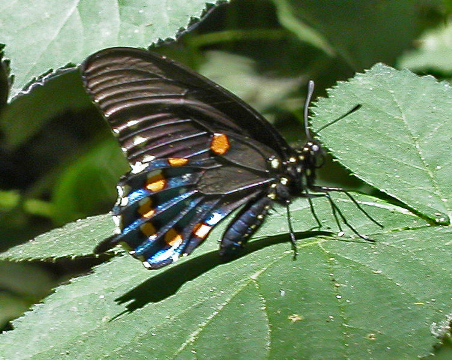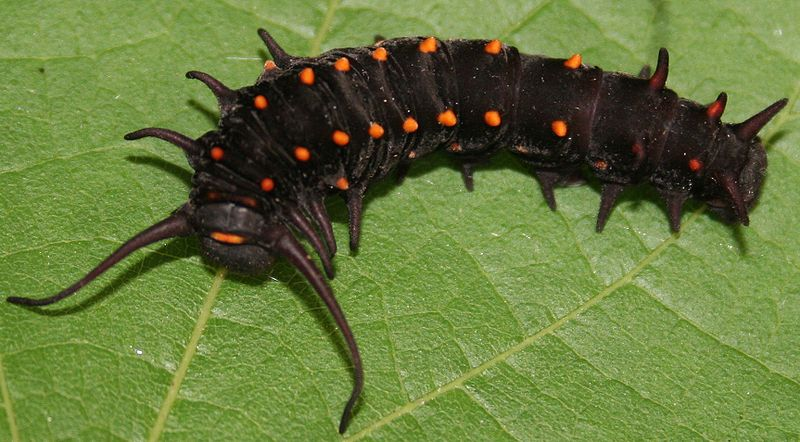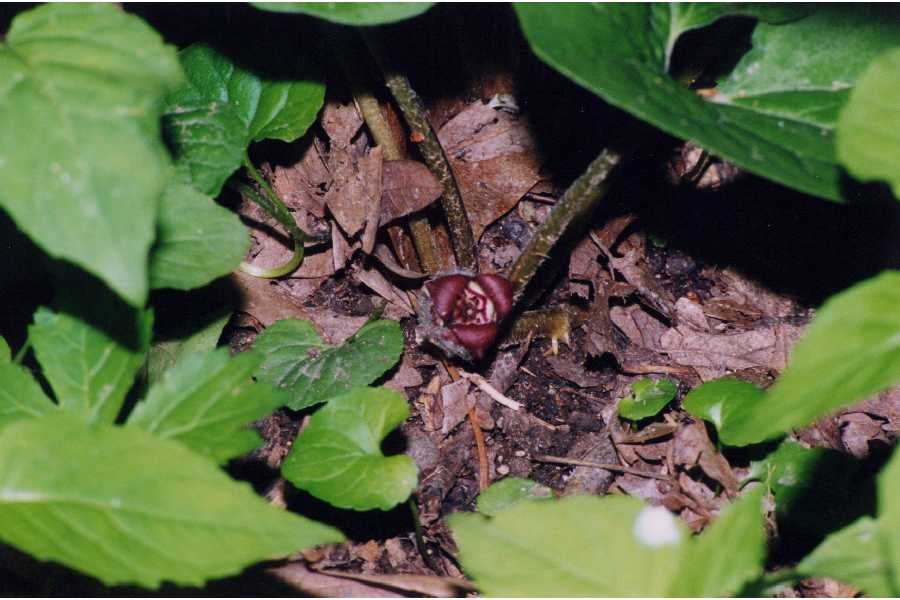FRIENDS 'TIL THE END
 The woodland home of
Asarum canadense is also home to many
other organisms, which means many interactions take place. While
many of these are just minor, there are some very important
interactions that occur for the survival of one, or both
organisms.
The woodland home of
Asarum canadense is also home to many
other organisms, which means many interactions take place. While
many of these are just minor, there are some very important
interactions that occur for the survival of one, or both
organisms.
Canadian wild ginger serves as a nesting ground for the
pipevine swallowtail butterfly, Battus philenor, to lay
eggs. It is used as a host and food source for the maturing larvae. The butterfly is most common in
the southwest during late summer and
fall, but c an be found to
inhabit areas as north as Massachusetts. Occasionally there are
strays found in Canada, but most of the butterflies lay their
eggs on Asarum canadense plants that are farther south.
an be found to
inhabit areas as north as Massachusetts. Occasionally there are
strays found in Canada, but most of the butterflies lay their
eggs on Asarum canadense plants that are farther south.
Asarum canadense is a plant that sits very low to the ground, and for very good reason. Pollination is assisted via beetles, flies, and ants that crawl by. The insects are attracted to the aroma of the flower. However, if cross-pollination does not occur, Asarum canadense is capable of self-pollinizing.
A very common interaction that occurs in 80% of plants is that with mycorrhizae, a fungus. The relationship between Asarum canadense and mycorrhizae is mutually beneficial. The presence of mycorrhizae improves the transport of minerals in the plant because the vast mycelial networks of the fungi are more efficient in obtaining minerals from the soil than the roots of the plant. It also increases the surface area of the roots. The fungi benefits by receiving sugars that are produced by the plant.
Asarum canadense is very interesting, but learn some unique interesting facts about this plant.
